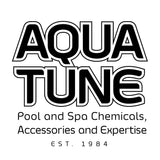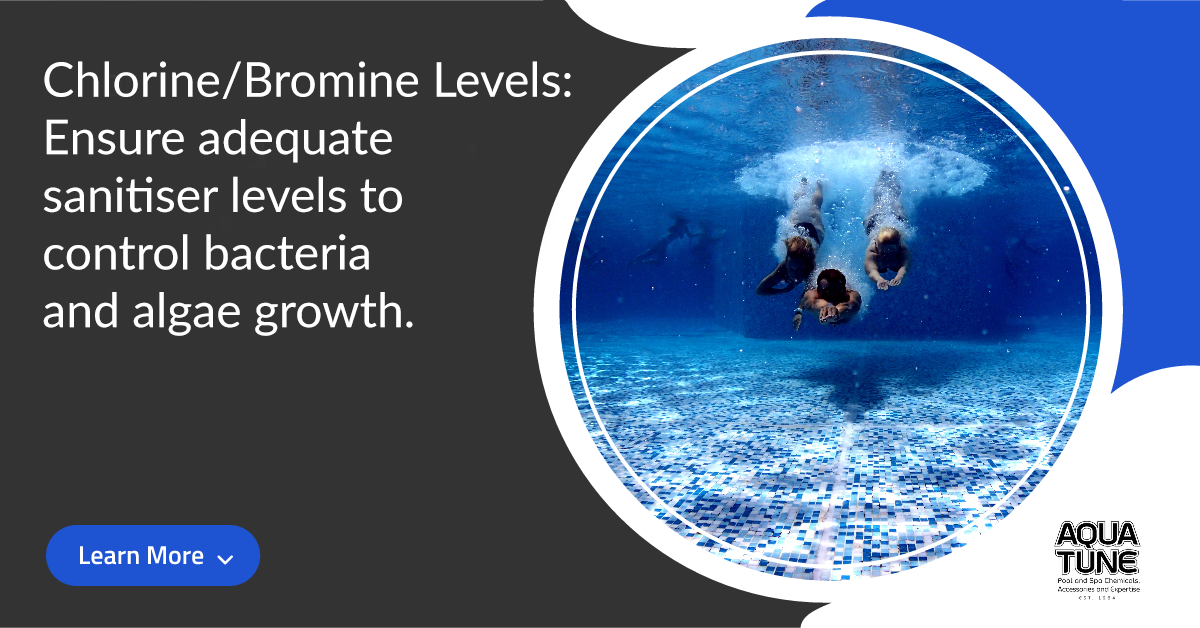
Greetings, pool and spa enthusiasts!
As passionate pool / spa specialists, we understand the importance of maintaining optimal water quality. Your pool or spa is not just a place for relaxation; it's a haven that should provide crystal-clear water and a refreshing experience.
Featured Question:
Today, I'm thrilled to address a crucial question submitted by Andy from Googong:
"What are some important facts about water quality and how to spot something is wrong?"
Let's dive right in!
1. Balance is Key:
Maintaining balanced water chemistry is essential for pristine water quality. Here are some key factors to consider:
- pH Levels: Aim for a pH range of 7.2 to 7.6 for optimal comfort and sanitiser efficiency. Always have some quality home test strips to do so.
- Total Alkalinity: Maintain a total alkalinity level between 80 and 120 ppm to prevent pH fluctuations. Balancing chemicals are available here
- Chlorine/Bromine Levels: Ensure adequate sanitiser levels to control bacteria and algae growth.
- Calcium Hardness: Aim for a calcium hardness level between 200 and 300 ppm for reactive surfaces (eg. concrete, fully tiled) and 150-200 mg/L for vinyl and fibreglass. Balancing chemicals are available here

Frequent water testing is crucial to stay on top of your water quality. Invest in a reliable test kit, use some quality home test strips or utilise the services of a professional pool service company to check the following:
- pH, chlorine/bromine and sanitiser levels
- Total alkalinity and calcium hardness
- Cyanuric acid (if using stabilised chlorine)
- Metals (iron, copper) and phosphates (which can cause algae growth and you may need to go to your local pool shop for these tests)
Being able to spot potential issues early on can save you time, money, and ensure a safe swimming environment. Look out for these red flags:
- Cloudy or murky water: Indicates poor water filtration or unbalanced chemistry. Clarifying solutions may assist.
- Strong chemical odour: May suggest an imbalance in chlorine or other sanitiser levels.
- Algae growth: Green, brown, or black spots indicate inadequate sanitiser or poor water circulation. Algae Solutions may be needed.
- Eye or skin irritation: High chlorine/bromine levels or improper water balance can cause discomfort.
- Staining or scaling: Indicates imbalanced water chemistry or high mineral content.

To maintain optimal water quality, follow these best practices:
- Regularly clean skimmer and pump baskets to remove debris.
- Lubricate O'Rings/seals on your pumps and couplings to prevent leaks.
- Clean or backwash your filter according to the manufacturer's recommendations.
- Brush walls and floor to prevent algae growth and improve circulation.
- Keep the pool or spa area free of leaves, dirt, and other organic matter.
Ensuring pristine water quality is our shared commitment. Let's keep your pool or spa sparkling clean and provide you with a safe and enjoyable swimming experience.
Best regards,
Warwick
P.S. Do you have a question about your pool and or spa? Share it with us here and as a small token of our appreciation we will also send you a discount code for $10 off your next order over $75 (which includes free delivery)... https://www.aquatune.net.au/pages/quick-favour
P.P.S. Do you look after your pool or spa yourself? Join our Do-It-Yourself Pool and Spa Maintenance community here… https://www.aquatune.net.au/pages/diy
